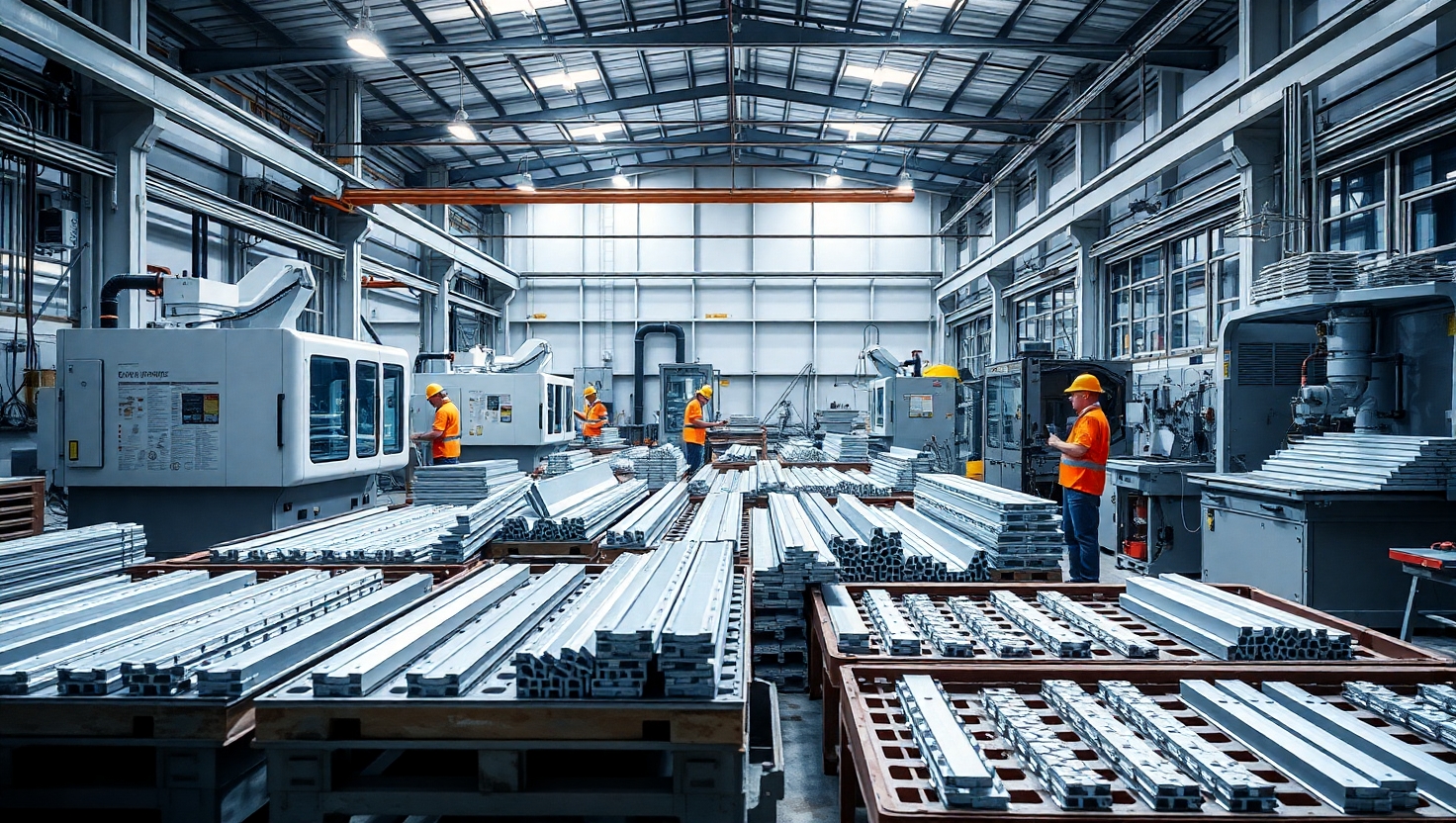What Happens Inside an Aluminium Extrusion Machine Shop? A Walkthrough
Published by: ALUTimes | Date: July 10, 2025
Introduction
An aluminium extrusion machine shop is the heart of modern aluminium processing. It transforms solid billets of aluminium into precise, high-strength profiles used across industries—construction, automotive, aerospace, and electronics. This article walks you through what really happens inside one of these advanced facilities.
What Is Aluminium Extrusion?
Aluminium extrusion is a process where aluminium alloy is forced through a die to produce a profile with a specific cross-section. It combines heat, pressure, and engineering precision to shape aluminium into versatile forms used in countless applications.
Step 1: Billet Preparation
It all starts with the billet—cylindrical pieces of aluminium alloy. In the machine shop, billets are:
- Preheated to temperatures between 400°C and 500°C
- Checked for surface defects or contamination
- Prepared for loading into the extrusion press
Step 2: Extrusion Press Operation
Preheated billets are loaded into the extrusion press. The process involves:
- Placing the billet into the press container
- Using a ram to push the metal through a steel die
- Forming the desired cross-sectional shape
Presses can exert thousands of tons of pressure, creating profiles ranging from window frames to aerospace structures.
Step 3: Quenching
Once the profile exits the die, it must be rapidly cooled (quenched) to set its mechanical properties. Quenching methods include:
- Air quenching
- Water spray or mist quenching
Step 4: Stretching and Straightening
The extruded profile may experience bending or twisting due to high temperatures. It’s pulled (stretched) and straightened to:
- Correct any distortions
- Relieve internal stresses
- Meet tight dimensional tolerances
Step 5: Cutting and Finishing
After straightening, profiles are cut to length using high-speed saws or shears. Further operations may include:
- Deburring
- Surface treatment (e.g., anodizing, powder coating)
- Drilling, punching, or CNC machining
Step 6: Quality Control and Testing
Every profile undergoes rigorous quality checks, such as:
- Dimensional inspection using calipers and gauges
- Surface finish analysis
- Hardness and tensile strength testing
- Ultrasonic and eddy current inspection for internal flaws
Common Equipment in a Machine Shop
- Hydraulic extrusion presses
- Heat treatment ovens
- Profile cooling conveyors
- Stretching machines
- High-speed circular saws
- CNC milling and punching machines
Safety and Environmental Standards
Machine shops follow strict safety regulations and sustainability goals. Features include:
- Worker PPE and machine guarding
- Fume extraction and recycling systems
- Energy-efficient heating and curing technologies
Conclusion
Aluminium extrusion machine shops are engineering marvels, combining heat, force, and finesse to shape metal for modern life. Each profile undergoes a journey from raw billet to a precision component used globally. Understanding this process offers valuable insight into the strength and versatility of aluminium products.
Disclaimer
This article is for educational purposes only. For specific extrusion standards and certifications, consult with licensed aluminium extrusion manufacturers and engineers. ALUTimes is not liable for the misuse of any content provided here.

